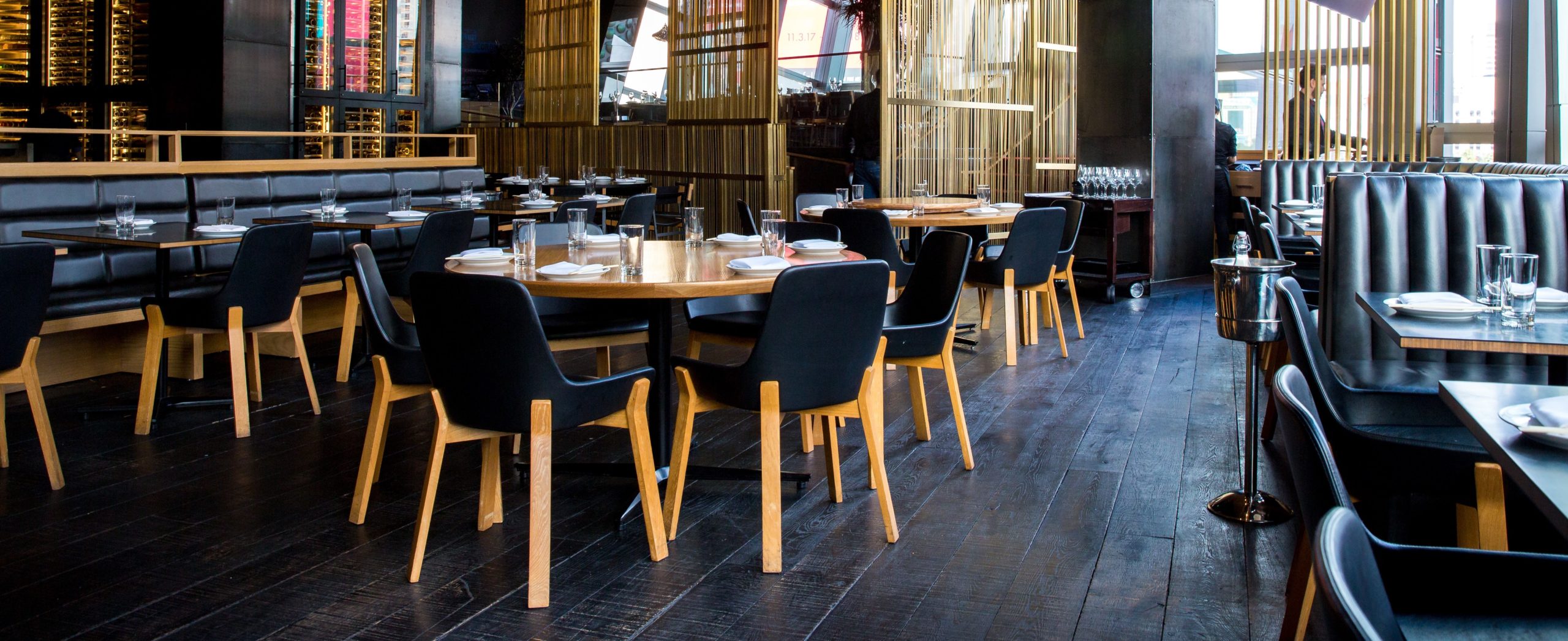

By Marie Molde, MBA, RD at Datassential
November 17, 2020
COVID-19 has brought dramatic and often unexpected changes to almost every aspect of our lives—including our views on food and restaurants. Fewer of us are dining out, and safety and sanitation have overtaken flavor as the top priorities for those who are. There’s growing interest in single-serve packaging, contactless ordering and deliveries, ethnic cuisine and functional foods. These and other current trends, and the future outlook, were the subject of a Golden Seeds Trend Talk in October with Marie Molde, a registered dietitian and food industry expert. Marie’s firm, Datassential, provides trend software, predictive analytics and consumer insights to the food industry. This is one in a series of Golden Seeds Trend Talks focusing on topics that are relevant, instructive and inspiring.
We’ve all seen the headlines about restaurants shutting down and consumers staying home to make sourdough starter and bake banana bread. There’s no question that the pandemic and resulting lockdowns have caused major upheaval in the restaurant business, overhauling the way Americans are cooking and eating. But it’s less clear how that’s playing out.
To find out what’s really happening and to see how things are evolving over time, we’ve surveyed over 80,000 consumers and several hundred restaurant owners and other foodservice operators over the past eight months. Our research has revealed some interesting trends.
In April, 68% of those surveyed said they were avoiding restaurants because of COVID. Since that peak, concerns seem to have eased, as now only 40% are now steering clear of restaurants though this may increase in coming weeks as we head into winter. If more restrictive regional restrictions are put in place like the current ban on indoor dining in Illinois and San Francisco, we may also see an increase. Spending patterns confirm the shift to eating at home: 45% of consumers said their biggest spending cuts are in dining out and clothing, while only 18% said they’ve cut spending the most on groceries.
After examining all the research, we’ve distilled some key lessons from the pandemic.
Lesson 1: Goodbye fear, hello caution
Fear peaked in April, when nearly 70% of survey respondents said they were very concerned about COVID. After some ups and downs over the spring and summer, the rate is currently hovering around 53%. That suggests Americans have moved past the emergency mode and become less fearful, adopting more of a cautionary mindset. More than 80% say they know what they need to do, and 60% report that precautions such as wearing a mask and maintaining social distance have become second nature. Many are venturing out again, and grocery stores rank first among places they feel safe visiting. When dining away from home, consumers feel most comfortable at restaurants with outdoor seating. They’re warier of buffets or places where people are clustered together, such as food courts.
One telling statistic reveals a major shift in attitude about dining out. In the thousands of surveys Datassential has conducted over the past 20 years, taste and flavor have consistently been the #1 thing consumers look for in a food and beverage experience. Not anymore. Since COVID, cleanliness and sanitation have moved into the top spot, pushing taste to #2. So we’re counseling our customers in the industry to focus on overt sanitation and visible cleaning measures—not just now, but in the future as well, since 76% of consumers say cleanliness will continue to matter more than it used to.
Other trends are also apparent. We’ve learned that people want tamper-proof and single-serve packaging for utensils and the components of a meal. This reverses the move toward sustainability, which is taking a back seat to safety, at least right now.
Lesson 2: Our future is accelerated
It’s clear that the pandemic is accelerating trends. There’s a big move to contactless interactions. Consumers prefer ordering a meal at a drive-through window or by phone, online or through an app. They’re also opting for contactless deliveries and curbside pickup, as well as contactless payment methods such as Apple Pay and Google Pay. There’s even a new alternative to salad bars: a low-touch robot called Sally, which will customize and dispense a salad.
On the home front, we’ve seen an uptick in grocery deliveries. When consumers do shop in person, they are going off hours to avoid crowds and are willing to pay more when they can’t find their normal product choices.
The passion for cooking is picking up steam and there’s a new crop of foodies, especially among millennials. We think this will continue, and baking from scratch is likely to remain popular. There’s a growing sense of food boredom, though. More than half of those surveyed said they’re tired of comfort food, and three out of four crave new experiences. There’s rising interest in ethnic cuisine, reflecting global influences. Consumers are most likely to experience new dishes and flavors at restaurants, which continue to drive trends and take the lead with innovation despite the pandemic.
Aside from food-safety and operational updates, adding healthy menu items tops the list of new measures that restaurants are taking. This summer, for example, Chipotle introduced cilantro-lime cauliflower rice as a grain-free option. It’s interesting to see a major chain launch a health-forward option in the middle of the pandemic.
Eating habits are evolving as well. Though 69% of Americans identify as meat eaters, 31% want to reduce their red meat consumption. While vegans and vegetarians account for only 3% to 8% of consumers, 58% aspire to eat more plant-based foods which reflects a lot of pent-up desire, with nearly 200 million Americans aiming to increase their intake of plant-based foods. That’s especially true among Generation Z, representing teens and 20-somethings. There’s growing interest in the flexitarian approach, which combines small quantities of meat and animal products with more plant-based foods.
We’re seeing stronger emphasis on healthy eating in general and a focus on local, natural and organic foods, as well as functional foods that offer health benefits such as improved sleep or better skin. This is sparking a convergence of food and beauty products, evidenced by the beauty retailer Sephora’s new food section and Jamba Juice’s smoothie for skin health.
Emerging foods include chia seeds, bee pollen, turmeric and the next big “green” food–seaweed. Classics are being reinvented: Peanut butter is giving way to almond butter, and oat milk is challenging almond milk. Mushroom coffee is a hot trend. In tracking the lifecycle of trends with our “menu adoption cycle,” we see that CBD and charcoal-based products are at the earliest stage, inception; turmeric is further along, in the adoption stage; aloe is now proliferating; and kale has become ubiquitous.
Lesson 3: Unprecedented mindset shift in collective consciousness
The popular wisdom used to be that you are what you eat. Now, it’s you eat what you are, meaning that personal values impact food choices. We see that continuing after the pandemic, with a desire for greater transparency in the supply chain and a passion for clean food and products sourced locally or made in the USA.
When we polled consumers, 77% said the pandemic has made them want to know more about a food’s supply chain. That’s especially true among millennials, higher-income consumers and families with children. In addition, 71% would buy food that is locally sourced. They would even choose shopping local in exchange for the convenience of getting everything they want in one shopping trip.
Finally, there’s an upsurge in the importance of “Made in the USA.” Our surveys showed it’s the #1, most important thing to consumers, above all-natural, organic, non-GMO and other attributes. In fact, it is even more important now than it was before the pandemic: 70% consider it of top importance now, up from 56% before the pandemic.
Given all these trends, we’re hopeful about the future. Headlines have exaggerated restaurant closures and can easily be misleading, but our universal foodservice operator database suggests that as of October 30th about 8% of restaurants are permanently or temporarily closed. I’m very optimistic that the restaurant industry will bounce back, because the dining out experience satisfies so much more than our need to eat, including paving the way for exciting new trends in food and beverage innovation.
Learn more about Datassential on the company’s website.
Read more of our Golden Seeds blogs for relevant, instructive and inspiring insights.